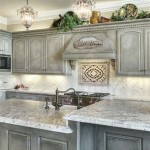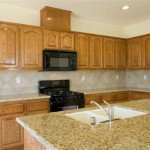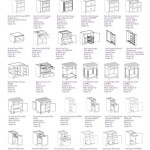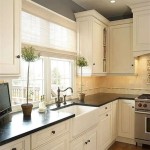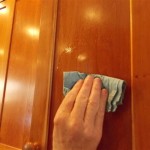Standard Sizes Of Kitchen Drawers
Kitchen drawers are an integral part of kitchen design, offering crucial storage space for utensils, cookware, and other essential items. Understanding the standard sizes of kitchen drawers is fundamental for planning a functional and aesthetically pleasing kitchen layout. Adhering to these standard dimensions ensures that drawers integrate seamlessly into cabinets and offer optimal organization.
The discussion of standard kitchen drawer sizes involves several key dimensions: width, depth, and height. While customization is possible, understanding the standard sizes offers a reliable starting point for making informed decisions about kitchen design. These standards have evolved based on factors such as common kitchenware dimensions, ease of access, and manufacturing efficiency. Deviating considerably from these standards may lead to compatibility issues with pre-fabricated cabinet components and accessories.
Standard Drawer Widths
Width is a primary factor when determining the overall storage capability of a kitchen drawer. Standard kitchen drawer widths commonly range from 12 inches to 36 inches, increasing in increments of 3 inches. For example, a kitchen cabinet might have drawer options of 12, 15, 18, 21, 24, 27, 30, 33, or 36 inches wide. These dimensions are generally designed to fit within standard base cabinet widths.
Narrower drawers, such as those measuring 12 to 15 inches, are typically utilized for storing smaller items such as cutlery, utensils, or spices. They can also be useful for dividing larger cabinet spaces into more organized sections. Drawers in the mid-range, from 18 to 24 inches, are versatile and suitable for storing dishes, pots, pans, and other frequently used kitchen equipment. Wider drawers, those from 27 to 36 inches, offer the largest storage capacity and are often used for storing bulky items like large pots, baking sheets, or food storage containers.
It is crucial to consider the internal dimensions of the drawer box when planning storage solutions. The actual internal width will be slightly smaller than the external width due to the thickness of the drawer box sides. This difference, typically around 1 to 2 inches, should be accounted for when selecting drawer organizers or dividers.
The choice of drawer width is often dictated by the overall kitchen design and the intended use of the storage space. Larger kitchens may benefit from wider drawers to maximize storage capacity, while smaller kitchens may require narrower drawers to optimize space utilization. Considerations such as countertop space, appliance placement, and traffic flow should also influence drawer width selection.
Standard Drawer Depths
Drawer depth, also known as drawer extension, refers to the distance the drawer extends outward from the cabinet. Standard kitchen drawer depths typically range from 16 inches to 22 inches. The most common depth is 21 inches, as this allows for a significant amount of storage space while maintaining ease of access. The depth of a drawer is usually dictated by the depth of the base cabinet in which it resides. Standard base cabinets are usually 24 inches deep, minus the thickness of the cabinet door, leaving approximately 21-22 inches for drawer depth.
A shallower drawer depth, such as 16 inches, might be implemented in situations where space is limited, or to accommodate specific appliances or plumbing within the cabinet. A deeper drawer, such as 22 inches, provides enhanced storage capacity for longer items or larger quantities of goods. However, accessing items at the back of a deeper drawer may require more effort, thus it is crucial to strategically organize contents.
It's important to note that the usable depth of a drawer is affected by the type of drawer slides used. Full-extension drawer slides allow the drawer to be pulled out completely, maximizing access to the entire drawer depth. Conversely, partial-extension slides limit the drawer's extension, reducing the accessible depth. Full extension slides are generally preferred for drawers that store frequently used items or for maximizing storage in deep drawers.
When planning drawer depth, it's important to consider the reach and accessibility of the user. A drawer that is too deep may be difficult to reach into, particularly for individuals with limited mobility. Ergonomic considerations should play a role in determining the appropriate drawer depth for a given application.
Standard Drawer Heights
Drawer height influences the type of items that can be stored within the drawer. Standard kitchen drawer heights vary, but generally fall within the range of 4 inches to 12 inches. Shallow drawers, often referred to as "utility drawers," typically range from 4 to 6 inches in height. These are commonly used for storing cutlery, utensils, and smaller kitchen gadgets.
Medium-height drawers, ranging from 7 to 9 inches, are versatile and can be used for storing dishes, cookware, and food storage containers. They provide a balance between accessibility and storage capacity. Taller drawers, ranging from 10 to 12 inches or even deeper, are often used for storing pots, pans, or other bulky items. These drawers may also be used to store tall bottles or containers, depending on the specific needs of the kitchen.
The configuration of drawers within a base cabinet is often determined by the types of items that will be stored. A common configuration includes a shallow drawer at the top for utensils, followed by one or two medium-height drawers for dishes and cookware, and a deep drawer at the bottom for pots and pans. This arrangement optimizes storage space and provides easy access to frequently used items.
When selecting drawer heights, it is essential to consider the vertical clearance required for the items being stored. Ensure that there is sufficient space between the top of the items and the top edge of the drawer to allow for easy opening and closing. Overstuffing drawers can lead to damage to the drawer slides or the drawer box itself. It is also beneficial to consider adding drawer dividers or inserts to optimize vertical space and prevent items from shifting during use.
Specialty Drawers and Customization
While the aforementioned dimensions are standard, specialty drawers and custom options are available to accommodate specific needs. These include drawers specifically designed for storing spices, knives, or baking sheets. These specialized drawers often feature custom inserts or dividers to optimize storage and organization.
Spice drawers are typically shallow and narrow, designed to store spice jars in an organized manner. Knife drawers often feature angled slots or blocks to safely store knives and prevent them from dulling. Baking sheet drawers are typically wide and shallow, designed to store baking sheets and cutting boards vertically.
Custom drawer sizes and configurations can be implemented to meet unique storage requirements. This may involve adjusting the width, depth, or height of drawers to accommodate specific appliances, plumbing, or other obstructions. Custom drawer options often come at a higher cost than standard drawers, but may be necessary to achieve the desired functionality and aesthetics.
When considering custom drawer options, it is crucial to work with a reputable cabinet maker or kitchen designer who can provide expert guidance and ensure that the drawers are properly integrated into the overall kitchen design. The selection of drawer slides, hardware, and finishes should also be carefully considered to ensure that the drawers function smoothly and aesthetically complement the surrounding cabinetry.
Importance of Drawer Slides
The functionality of a kitchen drawer is heavily reliant on the quality and type of drawer slides used. Drawer slides are the mechanisms that allow the drawer to open and close smoothly and reliably. Various types of drawer slides are available, each with its own advantages and disadvantages.
Ball-bearing drawer slides are a common choice for kitchen drawers due to their smooth operation, durability, and load-bearing capacity. These slides use ball bearings to reduce friction, allowing the drawer to glide effortlessly. Ball-bearing slides are available in various weight capacities, making them suitable for both light and heavy drawers.
Friction-based drawer slides, also known as side-mount slides, are a more economical option but generally offer less smooth operation and lower load-bearing capacity. These slides rely on friction between the drawer box and the cabinet frame to support the drawer. Friction-based slides are typically used in lower-end cabinets or for drawers that store lighter items.
Undermount drawer slides are mounted underneath the drawer box, providing a clean and unobstructed appearance. Undermount slides typically offer full-extension capability and soft-close functionality, enhancing the user experience.
Soft-close drawer slides are designed to prevent drawers from slamming shut. These slides incorporate a mechanism that gradually slows the drawer down as it approaches the closed position, ensuring a quiet and gentle closing action. Soft-close slides are a popular upgrade for kitchen drawers, providing added convenience and preventing damage to the drawer box and its contents.
Planning and Installation Considerations
Proper planning is crucial to ensure that kitchen drawers are both functional and aesthetically pleasing. Before selecting drawer sizes and configurations, it is essential to carefully assess storage needs and consider the types of items that will be stored in each drawer. Measure existing kitchenware and appliances to determine the appropriate drawer dimensions.
When installing kitchen drawers, it is important to ensure that the cabinet frames are level and square. This will prevent the drawers from binding or sticking. Accurate measurements are crucial for ensuring that the drawers fit properly within the cabinet openings. Follow the manufacturer's instructions for installing drawer slides and hardware.
Consider the placement of drawers in relation to other kitchen elements, such as appliances, countertops, and sinks. Ensure that drawers are easily accessible and do not obstruct traffic flow. Avoid placing drawers in areas where they may be blocked by open appliance doors or other obstacles.
Regular maintenance is essential to keep kitchen drawers functioning smoothly. Periodically clean the drawer interiors and drawer slides to remove dust and debris. Lubricate drawer slides as needed to ensure smooth operation. Avoid overloading drawers, as this can damage the slides and drawer box.
In summary, understanding standardizes sizes of kitchen drawers, widths, depths and heights are important factors when designing a kitchen. These dimensions are important for ensuring proper fitting, functionality and aesthetics. Proper planning and considerations during installation are essential for smooth and efficient operation of kitchen drawers.

Kitchen Cabinet Drawer Dimensions Standard Inspiration Ideas 3 Decorating Cabinets Height Measurements

Image Result For Kitchen Drawer Size Drawers Cabinet Dimensions

Cabinet Sizes Blok Designs Ltd

Standard Kitchen Cabinet Dimensions For Your Homee Design Cafe

Proper Depth For Frameless Cabinets

Cabinet Face Dimensions

View Topic Show Your Walk In Pantry Home Renovation Building Forum Kitchen Cabinet Drawers Base Cabinets Dimensions

2024 Kitchen Cabinet Drawer Dimensions Counter Top Ideas Check More At Http Ww Sizes Standard Drawers
-8197-p.jpg?strip=all)
Pine Traditional Style Ascending 3 Drawer Kitchen Base Unit 600mm

Base Cabinet Size Chart Builders Surplus
Related Posts

